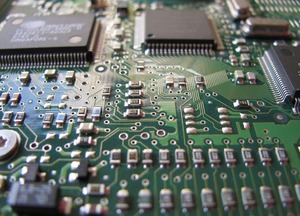Body
The Internet of Things (IoT) is transforming the way we interact with technology, embedding connectivity into everyday devices. This rapid expansion of IoT has driven demand for efficient, reliable, and precise power management solutions. Among these solutions, current sense transformers play a crucial role. These devices, which measure current flow and convert it into a usable signal for monitoring and control, are set to become even more integral to the IoT ecosystem. Let's explore the future of current sense transformers in IoT devices.
Enhanced Accuracy and Miniaturization
One of the most significant trends in current sense transformers for IoT devices is the push towards enhanced accuracy and miniaturization. As IoT devices become smaller and more sophisticated, the components within them must follow suit. The development of advanced materials and manufacturing techniques allows for the creation of smaller transformers without sacrificing accuracy or efficiency. This miniaturization is vital for IoT devices like wearables and smart home gadgets, where space is at a premium.
Integration with Advanced Analytics
The future of current sense transformers is also closely linked with advancements in data analytics and machine learning. By integrating these transformers with advanced analytics platforms, IoT systems can offer real-time monitoring and predictive maintenance. This integration helps identify potential issues before they become critical, reducing downtime and maintenance costs. For instance, in industrial IoT applications, precise current sensing can help monitor equipment health, ensuring optimal performance and preventing costly failures.
Enhanced Energy Efficiency
Energy efficiency remains a top priority in IoT development. Current sense transformers are essential in achieving this goal. They enable precise measurement of power consumption, allowing IoT devices to optimize their energy use dynamically. Future transformers will likely incorporate even more sophisticated power management features, such as energy harvesting capabilities, which will enable IoT devices to operate with minimal external power sources. This development is particularly important for remote or hard-to-reach devices where replacing batteries is impractical.
Wireless and Contactless Sensing
The trend towards wireless and contactless technology is another area where current sense transformers are evolving. Traditional wired connections can be limiting in terms of flexibility and installation complexity. Emerging wireless and contactless sensing technologies can simplify installation and reduce maintenance needs. This advancement is particularly beneficial for IoT applications in smart buildings, where retrofitting existing infrastructure with wired sensors can be challenging.
IoT Security and Reliability
As IoT devices proliferate, security and reliability are paramount. Current sense transformers contribute to this by providing consistent and reliable power monitoring, which is critical for maintaining the integrity of IoT systems. Advanced transformers can also include features such as tamper detection and enhanced signal processing, which help in securing the device against unauthorized access and ensuring accurate data reporting.
The Role of AI and Edge Computing
The integration of AI and edge computing with current sense transformers is set to revolutionize IoT applications. By processing data locally on the device rather than relying on centralized cloud servers, IoT systems can achieve faster response times and enhanced privacy. Current sense transformers equipped with AI capabilities can perform real-time data analysis and decision-making, leading to more responsive and intelligent IoT systems. This is particularly useful in applications such as autonomous vehicles, where real-time decision-making is crucial.
Conclusion
The future of current sense transformers in IoT devices is bright and full of potential. With advancements in accuracy, miniaturization, energy efficiency, wireless technology, and integration with AI and edge computing, these components will continue to be pivotal in the evolution of IoT. As the IoT landscape expands, the role of current sense transformers will become even more critical, driving innovation and ensuring the reliable and efficient operation of connected devices. Embracing these advancements will enable us to harness the full potential of IoT, paving the way for smarter, more connected, and efficient systems.













Comments